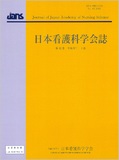Japanese
English
- 販売していません
- Abstract 文献概要
- 参考文献 Reference
要旨
目的:サージカルマスク装着下におけるフェイスシールドの装着および発声方法と,主観的評価および音圧レベルとの関連を明らかにする.
方法:都内の看護学部学生を対象に11名の看護師役に指定した文を明確音声と標準音声で発声してもらい,フェイスシールド装着時と非装着時の音声をICレコーダーで録音した.1名の患者役が看護師役の音声の聞き取りやすさを評価した.分析は,単変量解析及び音響分析ソフトPraatのLong-Term Average Spectrumを用いて音圧レベルを図示した.
結果:標準音声はフェイスシールド装着に関わらず,フェイスシールド装着時の明確音声に比べ,有意に聞き取りやすいという結果であった.0〜2,000Hzの周波数ではフェイスシールド装着時と非装着時で声の音圧レベルが同様である人の割合が多かった.
結論:音声の違いをより明らかにするため音圧レベル以外の指標も用いた調査が必要である.
Purpose: This study aimed to clarify the relationship between use of a face shield and vocalization methods under the wearing of a surgical mask through a subjective evaluation and assessment of sound pressure level.
Methods: Participants comprised 11 undergraduate nursing students in Tokyo, who played the role of nurses. They were asked to vocalize specified sentences in both clear and standard voices, and their voices with and without a face shield were recorded with a digital voice recorder. One participant assumed the patient's role and was asked to evaluate the audibility of the four different voices of participants in the nurse's role. Univariate analysis was used, and speech was graphed for sound pressure level using the acoustic analysis software Praat's Long-term Average Spectrum.
Results: The standard speech vocalization with a face shield (p = 0.021) or without a face shield (p = 0.005) was significantly easier to hear than the clear speech with a face shield. The sound pressure level was similar in the frequency range of 0-2,000 Hz for a large percentage of people with and without a face shield.
Conclusions: It is necessary to use indices other than sound pressure level to clarify the differences in speech depending on whether the face shield is worn and the method of speech vocalization.
Copyright © 2022, Japan Academy of Nursing Science. All rights reserved.


